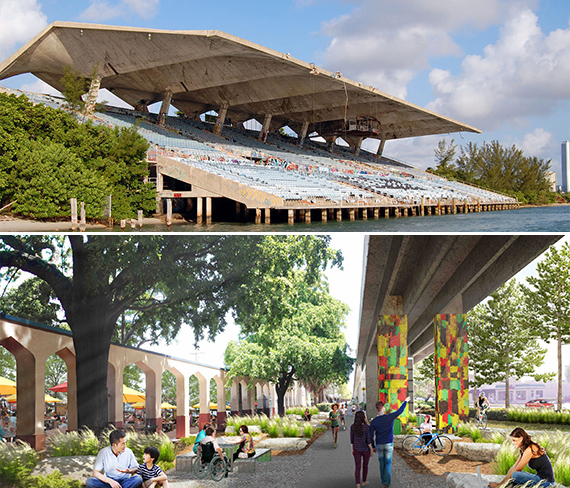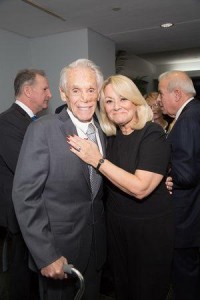Trending
City officials eye EB-5 investors for Miami Marine Stadium, Underline and more

As the Congressional battle to overhaul the controversial EB-5 visa program rages on, the city of Miami hopes to use it to tap foreign investors for the Miami Marine Stadium restoration, as well as the construction of the Underline and a veterans living facility.

Tibor Hollo and Mikki Canton
At an EB-5 conference in Miami City Hall on Thursday, Mikki Canton, Mayor Tomas Regalado’s international development managing director, told attendees that the marine stadium and the Underline linear park and trail project both received approval from the U.S. Citizenship and Immigration Services to seek foreign dollars to help finance completion of both projects.
Canton said she also expects immigration officials to give the green light for the new home of the Miami Veterans Village near the Jackson Memorial Hospital district.
“We’ve been working on these projects for the last two years,” Canton said. “We went very slow to make sure their plans met the goals of the EB-5 program.”
Canton oversees the City of Miami Regional Center, which is a vehicle that allows a private or public entity to seek out foreign nationals seeking to immigrate to the U.S. to invest in local development projects. Regional centers submit applications to U.S. Citizenship and Immigration Services on behalf of the developers and their investors. The first project to receive an EB-5 designation was Tibor Hollo’s Panorama Tower in 2014, the same year the city’s regional center was established.
The current rules governing the EB-5 program are set to expire at the end of the month, but experts believe Congress will extend it until December while a bill with new rules makes it way through the House and Senate.
Under current federal law, a foreign investor must make a minimum investment of $1 million to an EB-5 approved project. The threshold is lowered to $500,000 for projects in so-called “targeted employment areas,” which are usually neighborhoods with high numbers of unemployed people. In both cases, projects investors fund must create a minimum of 10 direct jobs. If a project is successful, the investor and their immediate family members are granted permanent U.S. residency.
In recent years, developers in Miami and New York City have used the EB-5 program as a way to easily access capital for their projects. However, several cases of fraud involving developers and regional centers prompted an outcry to tighten up the program or do away with it altogether.
Virginia Congressman Bob Goodlatte recently submitted a new bill that raises the minimum amount of money investors can put in a project from $500,000 to $800,000 for projects in targeted employment areas, and from $1 million to $1.2 million for those in areas with low unemployment. The new dollar amounts would apply to projects that submitted applications since June 2015. Developers would also be prevented from gerrymandering projects to make them appear to be in high unemployment areas.
Canton told The Real Deal the proposed bill won’t hurt the city’s ability to attract projects for Miami’s regional center. “It actually helps us,” she said. “A lot of the integrity measures being proposed we have already been doing.”
Rogelio Carrasquillo, a partner with the law firm Fox Rothschild, which works with EB-5 developers, agreed with Canton. “These additional compliance measures will put EB-5 financing inline with other financing vehicles such as traditional construction lending,” Carrasquillo said. “It emphasizes compliance and due diligence.”




